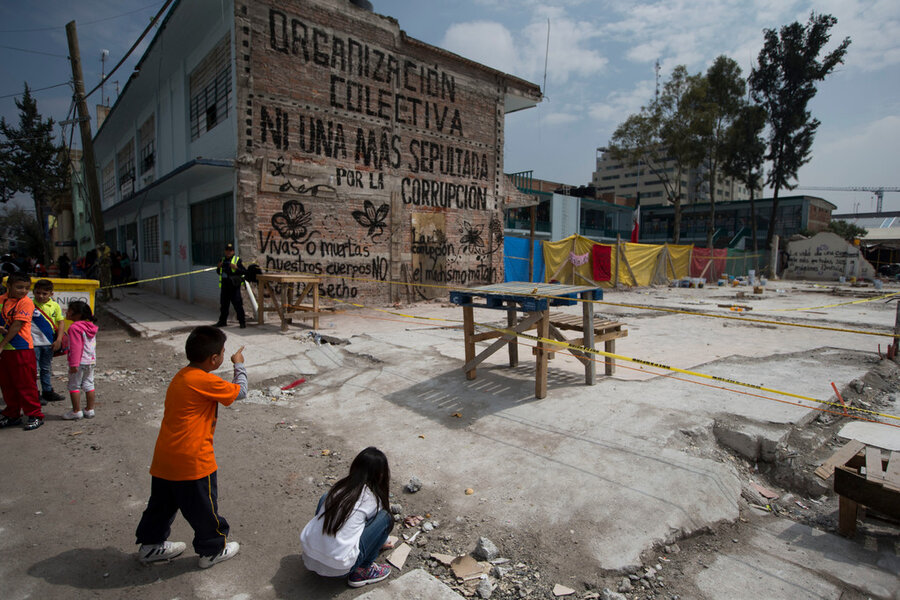Latin America’s anti-graft earthquake
Loading...
When an earthquake rattled central Mexico in September and dozens of buildings collapsed, Mexicans rallied by the thousands to rescue trapped survivors. Now many Mexicans realize corruption in the enforcement of building codes may have added to the size of the death toll (at least 369). As a result, a physical tremor has led to a political tremor.
Mexico City prosecutors, for example, have opened more than 150 investigations into alleged fraud and negligence related to the quake. And a petition campaign that collected more than a million signatures resulted in money designated for political campaigns being diverted to earthquake relief. In addition, the continuing public outcry is expected to shake up the 2019 presidential election.
The post-quake response in Mexico is yet another sign of a new recognition in Latin America that corruption need not remain an unchallenged norm. In recent years, several countries such as Brazil, Guatemala, and Honduras have seen once-unimagined success in ousting corrupt officials. Experts point to the fact that the region’s middle class now exceeds the number of poor, which means more people are paying taxes and demanding accountability. People are also better connected by social media. Anti-corruption movements can be quickly organized.
Yet behind such social changes lies a deeper shift in attitudes about honesty and justice in public affairs. That shift is captured in a new survey of more than 22,000 people in 20 Latin American countries by the watchdog group Transparency International. The poll reveals that 70 percent in the region believe ordinary people can make a difference in fighting corruption, defined as the abuse of public office for private gain.
“We found that a large cohort of people stands ready and willing to get involved in the fight against public sector graft,” states the survey’s report. One big reason: More than 90 million people in Latin America had to pay a bribe in the 12 months prior to the survey. That is equivalent to nearly 1 in 3 of the people who rely on basic public services.
This rising pressure against corruption has “opened a rare window of opportunity” for national leaders to make reforms, state three economists at the International Monetary Fund.
“Latin America’s fight against corruption is increasingly becoming a priority,” they wrote in a September blog on the IMF website. “At the end of the day, breaking corruption requires standing up against powerful vested interests – both private and government – who benefit from the status quo.”
The earthquake in Mexico came 32 years to the day after another major quake also destroyed lives and buildings. That 1985 quake led to the fall of one-party rule in Mexico and the expansion of democracy. Perhaps with this latest disaster Mexicans will finally curb their corrupt politics. Such a shake-up starts with a realization of the need for openness and equality before the law in public life.







